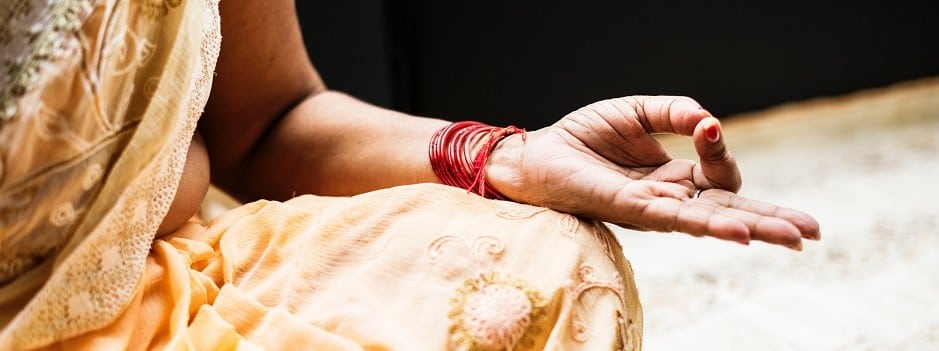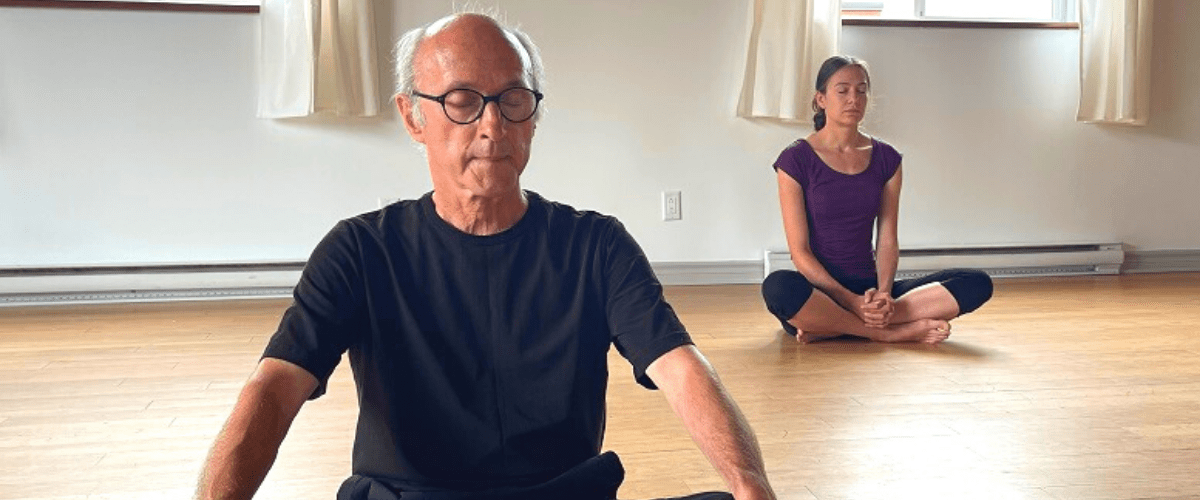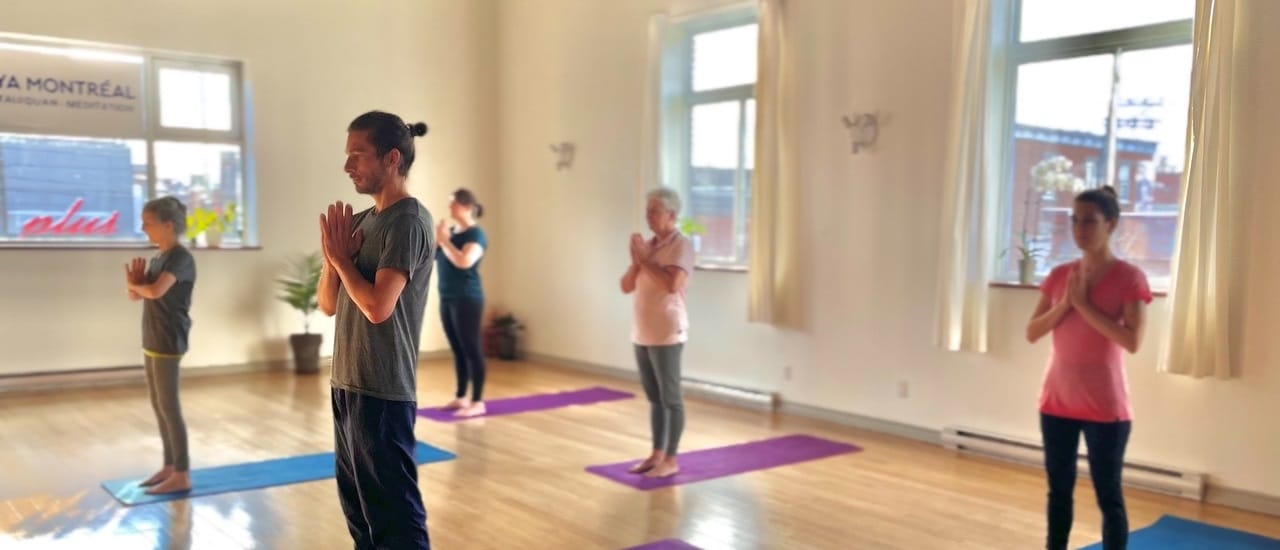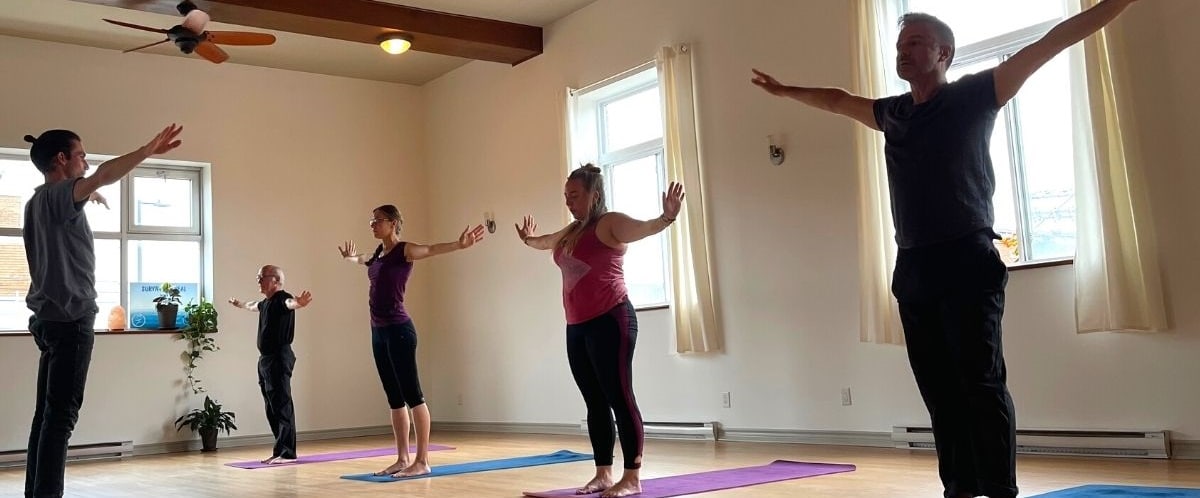Pranayama is the “bridge” between “external” yoga (physical poses) and “internal” yoga (meditation).
It can be explored along three dimensions:
1) Physical aspect
First of all the yogi learns:
- to watch their breath without changing it, especially to grasp where it starts and where its ends in the chest (pranasthana),
- then to stretch it out, beginning at the natural breathing rhythm to reach that of a respiratory cycle per minute comfortably,
- finally to modify the rhythm of the breath by changing the duration of inhale and exhale and then by holding the breath with either full or empty lungs.
All of this results in a number of significant physical effects such as a greater respiratory capacity, better blood flow and a greater overall vitality. Diseases such as asthma for instance are efficiently cured through a regular practice of Pranayama. According to some neuroscientists, respiratory functions are more easily influenced than any other vital function and the yogi uses this control as a first step towards the mastery of the nervous system. When a greater control of the cortical activity is accomplished over a function such as the breath, it becomes easier to master other functions (vasomotor, etc). It then becomes possible to reduce the blood pressure, or the heart rate (see the study of Dr. Thérèse Brosse about Krishnamacharya in 1935 in Mysore).
2) Energetic aspect
The practice of pranayama can have some effects on the energetic level, for example some practices make it possible to concentrate prana in some particular areas of the body and thus reveal some hidden capacities. The work of intention (bhavana pranayama) is capital in order to direct prana, the breath shouldn’t be mechanical but “inhabited” by a conscious attitude (such as joy, or peace) because as they say, “energy follows thoughts”.
Many of the so-called “miracles” of Indian fakirs are in fact born from a certain level of mastery of prana, which often makes them appear as great souls to their disbelieving bigots. At this level of practice, the theoretical understanding of the energy flow in the body (doshas, koshas, nadis, chakras tec) is important as is the “supervision” of a qualified instructor.
3) Spiritual aspect
In his commentary on the yoga sutras, Vivekananda tells us:
“When the posture has been conquered, then this motion is to be broken and controlled, and thus we come to Pranayama; the controlling of the vital forces of the body. Prana is not breath, though it is usually so translated. It is the sum-total of the cosmic energy. It is the energy that is in each body, and its most apparent manifestation is the motion of the lungs. This motion is caused by Prana drawing in the breath, and is what we seek to control in Pranayama. We begin by controlling the breath, as the easiest way of getting control of the Prana.”
When pranayama is combined with other practices such as mantras (sounds), nyasa (placement of the mantra on some parts of the body), mudras (gestural seals) and bhavana (imagination and visualisation), the efficiency of pranayama is thus multiplied and has a great influence on the emotional, intellectual and spiritual planes. When these practices are used during pranayama so as to trigger a meditative state we can then say that pranayama is “sagarbha” (with seed) as opposed to pranayama “agarbha” (without seed) that is to sayd without mantra, bhavan or nyasa.
Sagarbha pranayama is considered more efficient than the simple control of breath at the physical level.
sagarbo mantrasahitah vigarbho mantravicyutah |
prasasto mantra sahita itarastvadhamassmrtah ||
Pranayama done reciting a mantra is called with seed (sagarbha pranayama) and pranayama without mantra is called without seed (vigarbha pranayama). The scriptures praise pranayama with mantra whereas the second type is considered inferior (1-97 Yoga Rahasya).
We can then tackle the superior levels of refinement implying emotions and then intellect during pranayama.
kecittu saptavyaharasahitam sirsasammitam ||
gayatrimarthasahitam vyaharanti budhottamah ||
Enlightened yogis advise the use of the gayatri mantra with the pronunciation of the seven planes of manifestation (sapta vyahrtis) and the head (siras) as well as the contemplation of the meaning of the mantra during the practice of pranayama (1-115 Yoga Rahasya).




